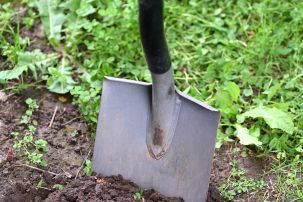Lesson summary
In this simple experiment the class will have the chance to study the different ways that waste materials break down. The class will bury a variety of ‘waste’ materials and dig them up at regular intervals to see how they are breaking down. This activity can be extended over several weeks or months, with the class revisiting the waste materials each week and recording their findings.
Learning intentions:
Students will...
- determine how different types of waste take different amounts of time to break down
- take responsibility for their own waste
- learn scientific observation skills.
Success Criteria:
Students can...
- conduct an experiment
- use tables to record data
- draw conclusions based on data.
Lesson guides and printables
Lesson details
Curriculum mapping
Australian Curriculum content descriptions:
Foundation Science:
- Objects are made of materials that have observable properties (ACSSU003)
- Daily and seasonal changes in our environment, including the weather, affect everyday life (ACSSU004)
- Respond to questions about familiar objects and events (ACSIS014)
- Explore and make observations by using the senses (ACSIS011)
- Engage in discussions about observations and use methods such as drawing to represent ideas (ACSIS233)
- Share observations and ideas (ACSIS012)
Syllabus outcomes: STe-4WS, STe-9ME, STe-7NE.
General capabilities: Critical and creative thinking.
Cross-curriculum priority: Sustainability OI.3, OI.8.
Time required: 60 mins to setup then ongoing to collect results
Resources required
- Burial site for waste
- Digging tools
- Different types of waste (glad-wrap, plastic bags, milk bottles and water bottles)
- Gloves for teacher and students to avoid contact with waste
- Printed Student Worksheet for recording waste
Skills
This lesson is designed to build students’ competencies in the following skills:
- communication
- critical thinking
Additional info
Following this lesson plan is an ideal way for your school to take part in Schools Clean Up Day or a Clean Up on any day of the year. You’ll be joining thousands of amazing teachers in making a difference and creating positive environmental change.


Welcome back!
Don't have an account yet?
Log in with:
By signing up to Cool.org you consent and agree to Cool's privacy policy to
store, manage and process your personal information. To read more, please see
our privacy policy here(Opens in new tab).
Create your free Cool.org account.
Many of our resources are free, with an option to upgrade to Cool+ for premium content.
Already have an account?
Sign up with:
By signing up to Cool.org you consent and agree to Cool's privacy policy to
store, manage and process your personal information. To read more, please see
our privacy policy here(Opens in new tab).